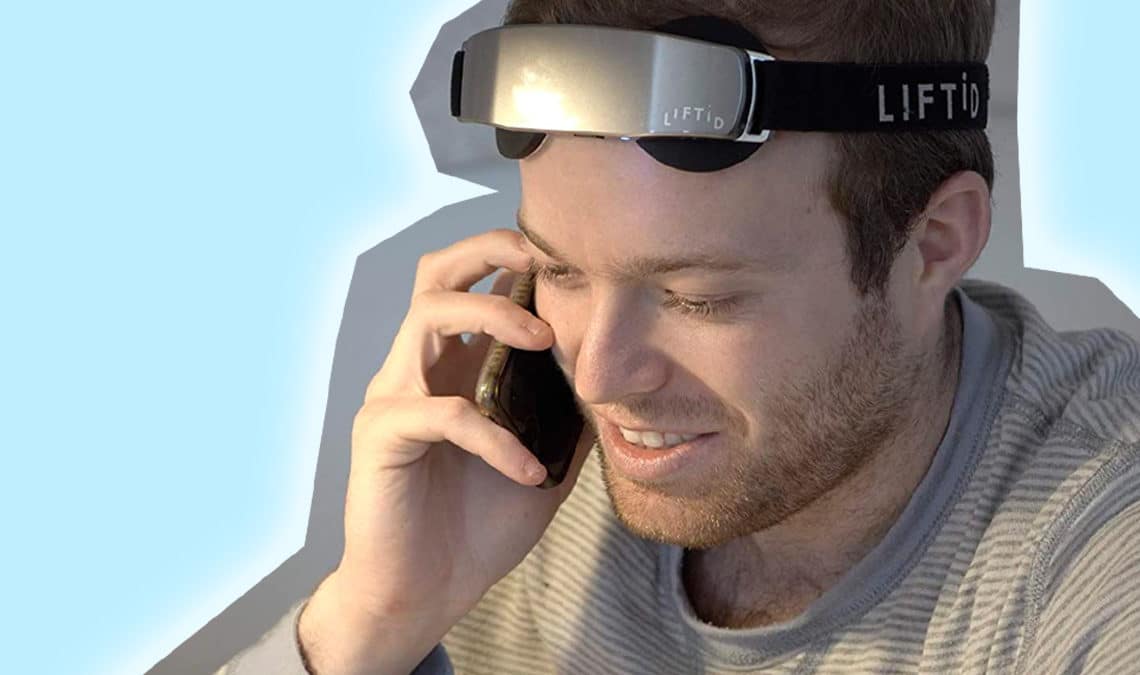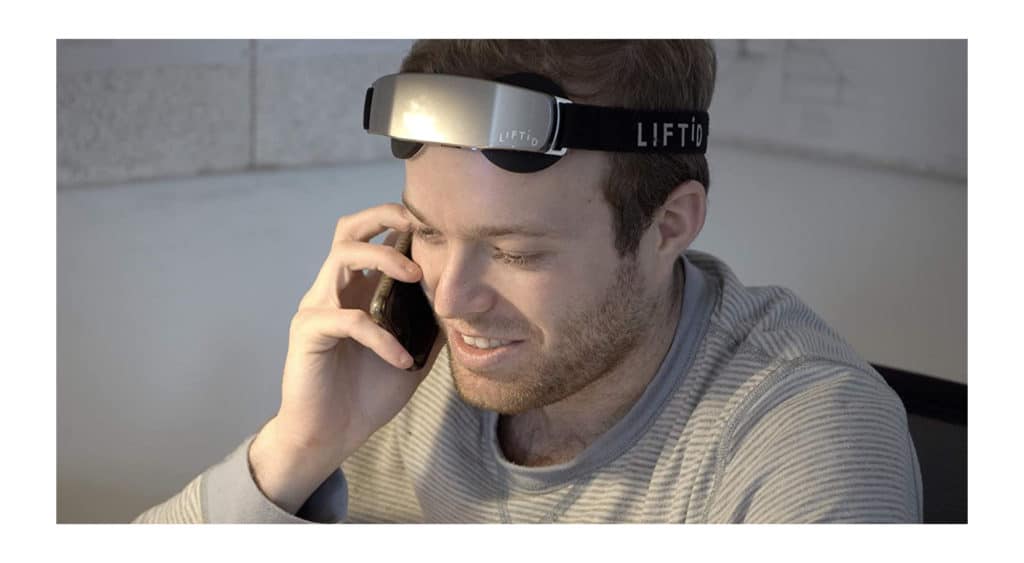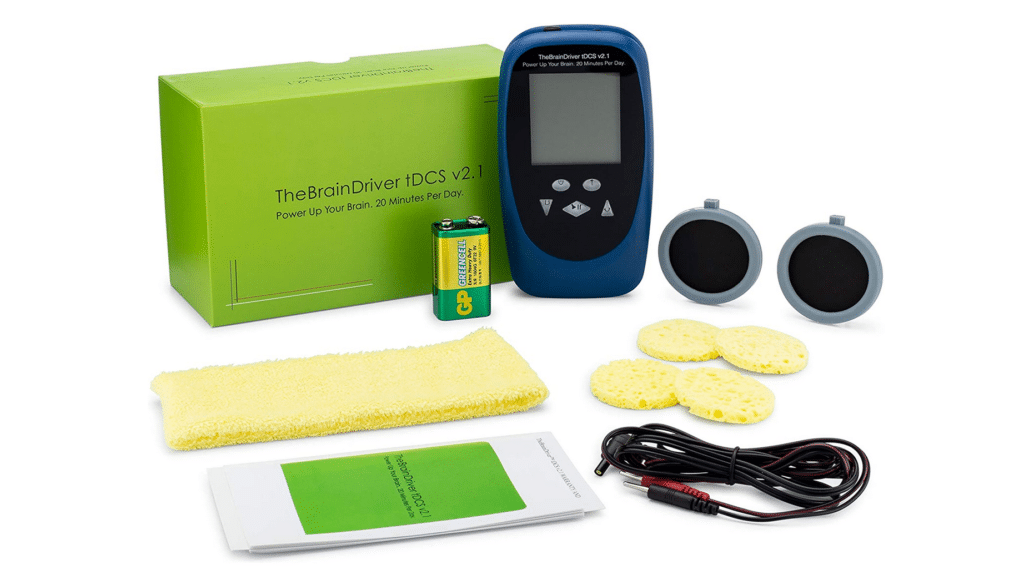
In the movies, running an electric current through a patient’s head is one of those barbaric medical practices that people stopped using over half a century ago.
In real life however, it’s still quite common. In fact, there are several ways of doing it, and they’re all effective for some purposes.
One such method is transcranial direct current stimulation, or tDCS. It shows promise in treating depression, and may also be useful in boosting cognition.
Furthermore, much like EEG headsets, tDCS devices have started being made for at-home use by consumers. So is this something you should try at home? Let’s take a look.
How Transcranial Direct Current Stimulation Works
First off, tDCS is not electroshock therapy– I’ll explain the difference in a minute.
Transcranial direct current stimulation is a neuromodulation technique which runs a constant, low-power direct current through the brain via electrodes placed onto the head. The current applied can be either positive or negative, each of which have opposing effects.
The current applied by tDCS alter’s the resting membrane potential of the targeted neurons. Positive stimulation (anodal tDCS) depolarizes the resting membrane potential, increasing neuronal excitability. Negative stimulation (cathodal tDCS) has the opposite effect, reducing the activity of the targeted neurons.
Different parts of the brain can be targeted depending on where the electrodes are placed. Depression treatment usually targets the left side of dorsolateral prefrontal cortex (DLPFC) located in the frontal lobe.
Notably, the effects of tDCS can persist for long after the treatment, sometimes weeks depending on the length and intensity of treatment, and tDCS may cause permanent or semi-permanent changes via inducing neurplastic changes in the brain.
Again, tDCS only uses a very weak current, usually 1-2 milliamperes. TDCS sessions are typically 20-30 minutes, and are usually performed daily for several weeks.
Transcranial direct current stimulation is conceptually similar to, but should not be confused with, the following:
- Electroconvulsive therapy, commonly known as electroshock therapy. This also uses a direct current, but orders of magnitude stronger– around 800 millimaperes, applied in short bursts for anywhere from .1 to 6 seconds. Contrary to media depictions, it actually is effective for treating depression, mania, catatonia and schizophrenia. However, it’s not something you could ever do at home.
- Cranial electrotherapy stimulation is similar to tDCS, but uses a pulsed alternating current. It’s being investigated for similar purposes to tDCS, but the evidence for it is very weak so far. If it bears out though, this is also something that could potentially be self-administered at home.
- Transcranial magnetic stimulation, which uses magnetism rather than electricity, which then induces an electric charge inside the brain. It appears to be effective for depression and shows some promise for other conditions, but so far there are no consumer devices that allow you to do it at home.
TDCS Benefits And TDCS Safety
Because of the very low current involved, tDCS raises no major safety concerns.
Minor, transient tDCS side effects are fairly common however. These include headaches, nausea, and itching at the places the electrodes are placed. Side effects are more common at 2 vs 1 milliampere, and can include minor skin lesions which heal without scarring after 1-3 weeks. As such, most tDCS devices now use only 1 mA.
So does tDCS work? Yes, at least for depression. Many studies and meta-analyses have found that tDCS is effective for depression. In fact it’s on par with many antidepressants, and with fewer side effects.
There is some evidence supporting tDCS for fibromyalgia, craving disorders, and negative schizophrenia. However more research is needed, and it’s not clear where best to apply the electrodes for these purposes. So far, it doesn’t seem effective for stroke, Alzheimer’s Parkinson’s, or positive schizophrenia.
What about cognitive enhancement? Evidence there is mixed. Many studies find tDCS can improve cognition, though other analyses disagree on this conclusion. On the other hand, reviews which find tDCS ineffective may have focused too much on between-subject difference and failed to consider within-subject effects.
In short, tDCS is very likely effective for cognitive, but because cognition is so complex, more research is needed to figure out the best way to apply it– which part of the brain, positive or negative, and how much. Due to inter-individual differences and the Yerkes-Dodson Law, the best way to use it may vary depending on the subject and the type of cognitive task they want to get better at.
The Best TDCS Devices, Reviewed
There are three good tDCS devices available on Amazon. They vary in their tradeoff between ease of use, cost and flexibility. One thing they all seem to have in common is that they all apply positive current only– so far, there don’t seem to be any home tDCS devices that can toggle between positive and negative currents.

Best Medical-Grade Home tCDS Device
Caputron TDCS Starter Kit
This is the high-end medical tCDS device for people who want to get the best possible results, and are willing to do the work to learn how to set up a tCDS device. More capable but takes a lot more knowledge and setup. For those who read our EEG headset article, the Caputron is like the Emotiv Epoc of TDCS devices.
It uses a pair of 9-volt batteries and comes with a pair of 3×3 inch electrodes, as well as ten sponge inserts that get used with the electrodes– replacement sponge inserts can be ordered when these wear out. You can place the electrodes anywhere on your head, and the current can be anywhere from .1 to 4 milliamperes, in .1 mA increments. Two knobs allow the dosage and current to be manipulated independently, and the session time is re-calculated as you change those.
This is the most expensive home tCDS device, but also the most capable, and it’s ideal for people who want the same level of effectiveness they could get from a professional tCDS session.

Best Easy-To-Use tDCS Device
LIFTiD tDCS Headset
For those who don’t want to go to the trouble of figuring out where to place tCDS electrodes on their head, or how much current to use for how long, LIFTiD keeps things simple. It has its electrodes fixed on a visor-like contraption that slips over your forehead. The current is fixed at 1.2 mA, and sessions are fixed at 20 minutes, so you just have to wet the electrodes, put it on and press start.
LIFTiD is advertised as being primarily for cognitive enhancement. User reviews are a bit mixed on how effective it is with about 2/3 reporting positive results, although they praise it for ease of use. This device also uses an internal rechargeable battery, and some reviewers have noted that it wears down fairly quickly over the course of a few months.

Best Low Cost Home tCDS Device
The Brain Driver
The Brain Driver is a DIY device like the Caputron, allowing the electrodes to be placed freely. Compared to the Caputron, it’s much simpler and takes more of a no-frills approach.
The current can be set only at .5, 1, 1.5 or 2 mA, and session times can only be 20 or 30 minutes. On the plus side, it automatically shuts off after the session time is up to prevent side effects from overly long sessions, and also has overload protection. It’s also far easier to use than the Caputron, since you don’t need to independently manipulate so many variables.
Users report positive results in treating anxiety, depression and insomnia. Most don’t seem to have tried it for cognitive enhancement.
Interested in EEG? Read our article on the best EEG headsets.
Editor’s note: we are regularly updating this review. If you see any problems, weird interpretations of the data, or just want to say hi, please reach out to hello@the-unwinder.com.